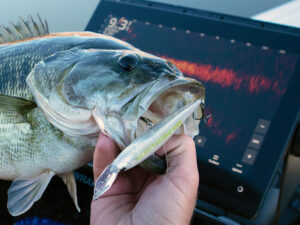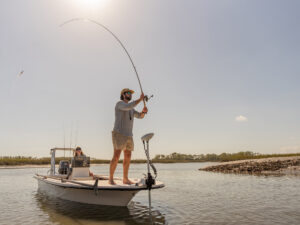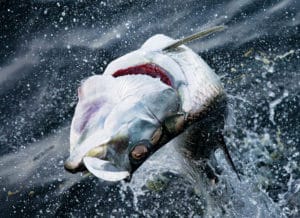
Resourceful anglers have incorporated circle hooks into almost every saltwater presentation over the past 25 years. From their modern origins in the longline tuna and Pacific Northwest halibut fisheries to their explosion across all fisheries in the past decade, circle hooks have flooded the market like a new-moon tide on a Savannah salt marsh.
And there’s no slowing down in sight.
Today, adept professionals like Capt. Mike Weinhofer, of Compass Rose Charters in Key West, Florida, utilize circle hooks on a daily basis, whether they’re bridling baits for sailfish, bottomfishing in the Gulf of Mexico, shark fishing on the flats or live-baiting for yellowtail snapper.
“I almost always use in-line circle hooks,” says Weinhofer. “Lots of sailfish tournaments require the use of in-line hooks, and the hookup ratio compared to offset hooks is not much different.”
The key to successful circle-hook fishing with natural bait is picking the proper hook, and our circle hook size chart below should help. Circles range in size, gauge and style, with enough variance to intimidate even the most experienced angler. Consider these important aspects of the best circle hooks before rigging your next bait.
Circle Hook Size
A true circle hook is engineered so the point is at a 90-degree angle or less to the shank of the hook — that single attribute causes predictable hook-sets in the corner of the jaw. But getting the right-size hook might play an even larger role in whether your bait swims naturally or the hook sets true.
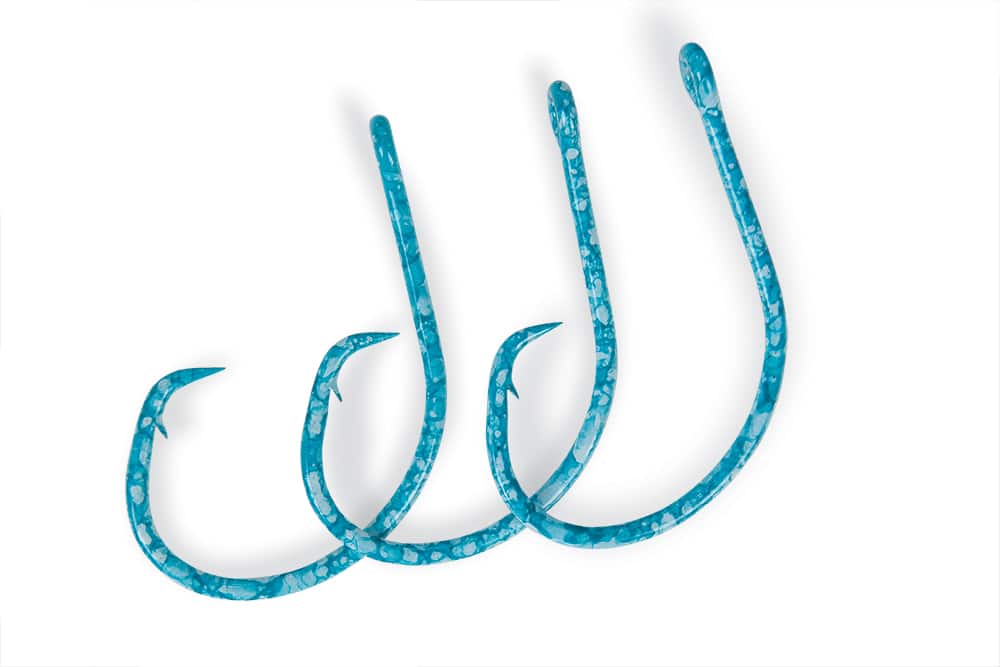
Unfortunately, anglers cannot trust that hooks labeled with the same number from different manufacturers are equally sized. Just because Eagle Claw’s Lazer Sharp circles (L2004EL), sizes 4/0 to 7/0, are perfect for anglers fishing with live mullet inshore, or Trokar Lancet circle hooks (TK4), ranging from 5/0 to 7/0, are prime for chunking baits to mahi, that doesn’t mean that Mustad, Gamakatsu or VMC follow the same sizing chart. To put it bluntly, there is no standard for hook sizes — it’s truly up to the manufacturer.

“The difference in sizing between manufacturers can be drawn all the way back to some of the original hook makers,” says Matt Gray, category manager of Eagle Claw Fishing Tackle. “Some manufacturers base the size on gap size, while others base it on the overall length of the hook.”
When live-baiting, match the size of your hook to your baitfish, he says. A hardy baitfish, such as a blue runner or jack, can handle a thicker-gauge hook without killing the bait. With any kind of fishing, make sure your target species is able to ingest the hook and bait, says Gray. In general, anglers should try to use the smallest hook they can get away with.
Weinhofer takes it one step further, matching the size and gauge of his hook to how much drag he intends to put on the fish.
“If I’m deep-dropping or fishing for tuna, I’ll use a heavy-gauge hook to handle the heavy drag pressure,” says Weinhofer. “But for sailfish tournaments, I’ll use a 6/0 thin-wire VMC tournament hook with a large gap that maxes out at about 28 pounds.”
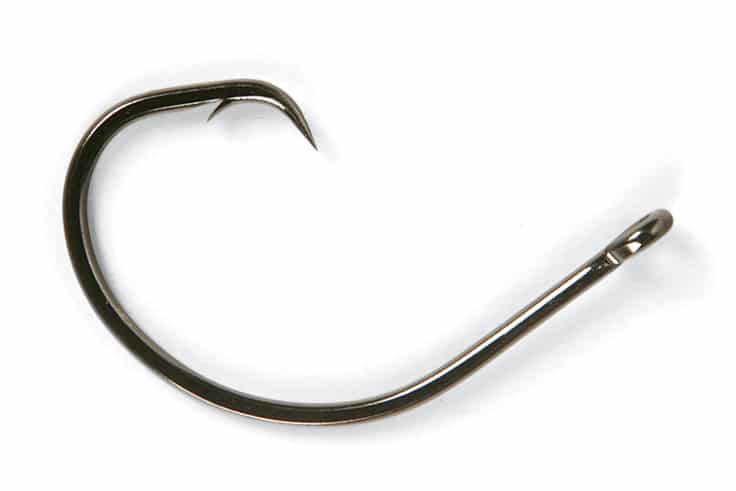
When shark fishing, Weinhofer intentionally uses a light-wire hook to help with the release. “I ask my anglers to take it easy on the drag when fishing sharks,” he says. “When the shark gets to boat-side, I can apply pressure with my hand on the leader, and the hook actually bends free without me getting close to their teeth.”
In-Line or Offset Circle Hooks
The in-line versus offset argument has been around for years, and it’s still debatable whether offset hooks catch more fish than in-line (nonoffset) hooks. Based on my fishing experiences, offset circle hooks defeat the purpose of a conservation-crafted hook because of their tendency to lodge deep in the throat of a fish.
“Use in-line hooks for situations where conservation is an issue,” says Syd Rives, of Gamakatsu hooks. “In-line circle hooks don’t gut-hook fish as often as offset circles, so they are a good choice for tournament fishermen and other recreational fishing, where the angler is not keeping his or her catch.”
Nonoffset circles are definitely picking up steam in terms of popularity. “The Big Eye Circle is perfect for larger fish, bottomfishing, deep-dropping and trolling,” says Rives. “Gamakatsu’s HD Live Bait Circle is a good chunk-bait hook for larger fish like tuna and bottom species.”
VMC recently introduced its 7266 Inline Single hook to replace trebles on lures and plugs. The high-carbon-steel hook features an extra-wide gap to improve catch rates, along with an oversize eye for freedom of movement.
Some circle hooks have offset eyes for a snelled connection that doesn’t gut-hook species, such as Gamakatsu’s Octopus Inline Circle and VMC’s Sport Circle. “If I’m drifting baits for tarpon in Key West harbor, I always snell to an offset-eye circle hook,” says Weinhofer. “A snelled hook seems to drift back truer with the chum and leads to a solid hook-set.”
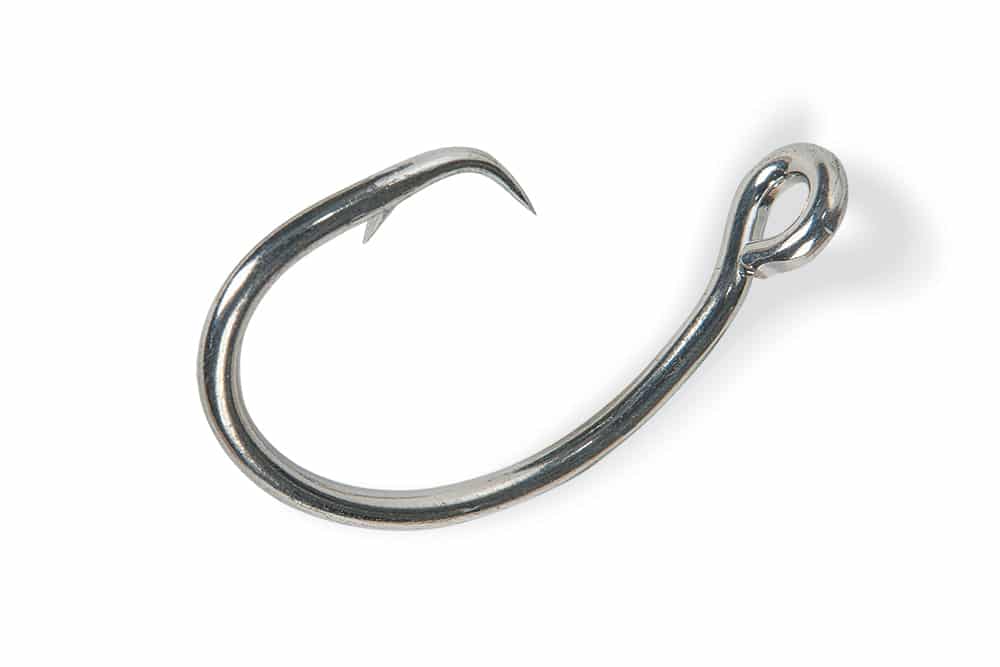
Your Style Guide for Circle Hooks
“The thinner your hook, the better your penetration and the faster the hook will set itself,” says Cyrille Mathieu, VMC Hooks’ vice president of sales and marketing. But not all species are caught on light-wire hooks; different species and tactics require distinctive styles of circles.
“We offer a wide variety of circle hooks,” says Mathieu, “from fine-wire to 6x-strong wire gauges, smaller and larger hook gaps, offset and nonoffset hook shanks, and even regular and large hook eyes.”
The different characteristics of a hook hint at how the bait is rigged and what species it can handle. Giant marlin often require a 6x-strong, heavy-duty 16/0 circle hook such as the VMC 9788, says Mathieu. To catch tournament sailfish, use a lighter 6/0 to 8/0, wide-gap, nonoffset tournament circle, such as model 7385.

There are no hard-set rules, so it’s better to use your judgment and some basic guidelines when you’re not sure which is the best circle hook to buy. Sometimes picking a hook is as easy as reading the description on the package. The basic live-bait principles below help clear up some confusion:
> Short-shank circle hooks interfere less with the bait presentation, while longer-shank hooks are used with larger baits. Light-wire hooks are ideal for stealthy and realistic presentations, such as when you’re casting delicate live shrimp.
> The heavier the gauge of the hook, the more drag pressure the hook can handle. However, a thicker-gauge hook shank requires a larger bait that can stay alive and will present properly. Heavy-gauge or larger-size hooks often come with larger hook-eye openings to handle thicker leader, wire or cable material. A short-shank, heavy-gauge circle hook is about as strong as you can get, used to catch trophy-class fish such as bluefin tuna.
> Wide-gap circle hooks offer the best hookup ratios, which explains why many billfish anglers use them when tournament sailfishing. But wide gaps are also more likely to bend or snap under a heavy load. The best bet is to find a happy medium that suits your style of fishing.
As circle hooks evolve, showing the inveterate advantages extolled by so many captains, anglers must be able to select the right size and style hook for their method of baitfishing. Don’t let the fish run circles around you.

Circle Hook Mettle
Circle hooks are designed for conservation and catch‑and-release fishing, so it makes sense that hook materials must be strong yet able to rust from a fish mouth. Most manufacturers now produce their hooks from premium high-carbon or Vanadium steel, says Matt Gray, of Eagle Claw. Sometimes a black-nickel finish is added to increase sharpness and encourage corrosion, depending on the manufacturer. In fact, some manufacturers, such as VMC Hooks, recommend that stainless steel and other highly noncorrosive surfaces be banned as finishes because they inhibit rusting.

